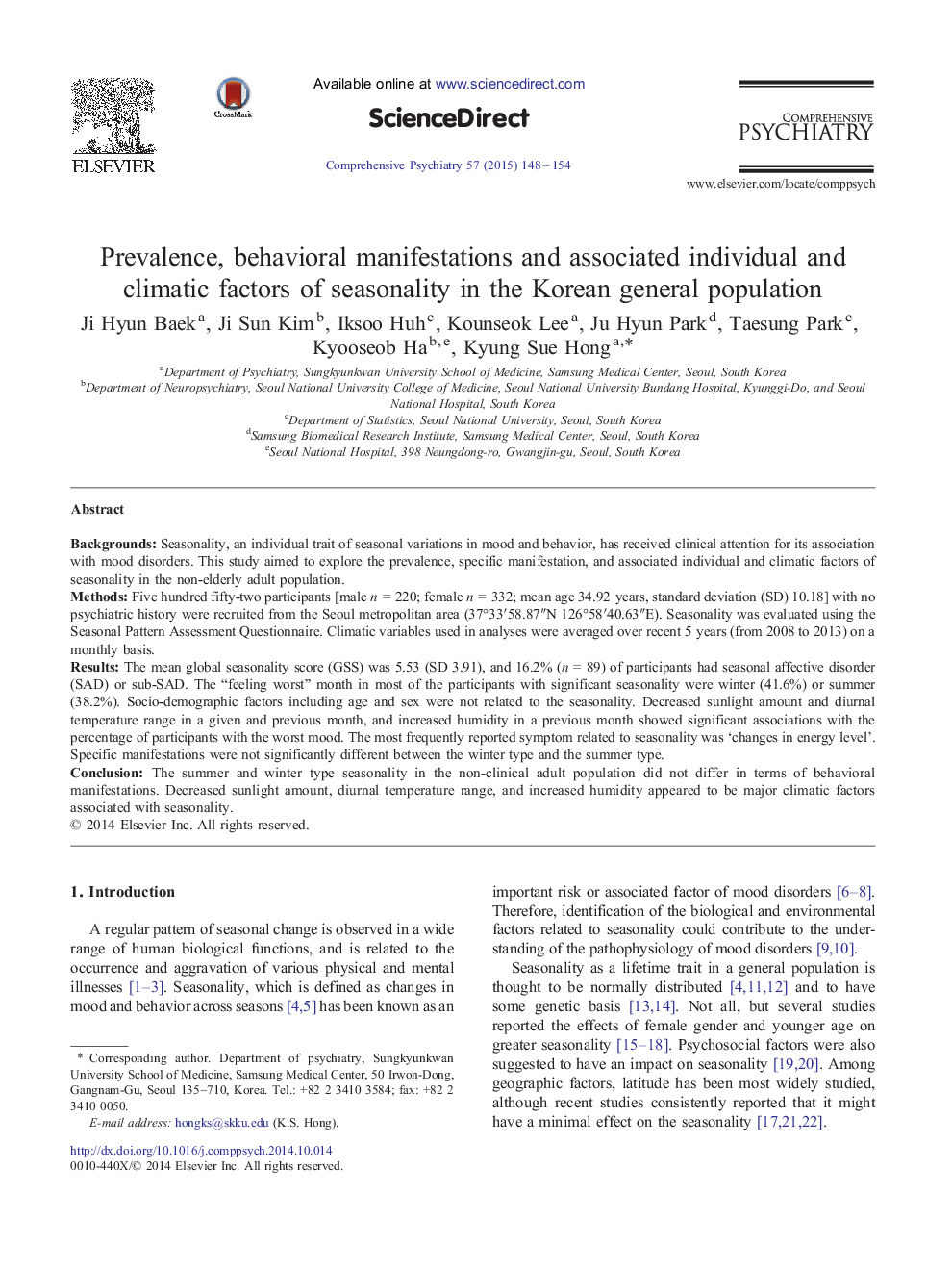| کد مقاله | کد نشریه | سال انتشار | مقاله انگلیسی | نسخه تمام متن |
|---|---|---|---|---|
| 318171 | 538294 | 2015 | 7 صفحه PDF | دانلود رایگان |
BackgroundsSeasonality, an individual trait of seasonal variations in mood and behavior, has received clinical attention for its association with mood disorders. This study aimed to explore the prevalence, specific manifestation, and associated individual and climatic factors of seasonality in the non-elderly adult population.MethodsFive hundred fifty-two participants [male n = 220; female n = 332; mean age 34.92 years, standard deviation (SD) 10.18] with no psychiatric history were recruited from the Seoul metropolitan area (37°33′58.87″N 126°58′40.63″E). Seasonality was evaluated using the Seasonal Pattern Assessment Questionnaire. Climatic variables used in analyses were averaged over recent 5 years (from 2008 to 2013) on a monthly basis.ResultsThe mean global seasonality score (GSS) was 5.53 (SD 3.91), and 16.2% (n = 89) of participants had seasonal affective disorder (SAD) or sub-SAD. The “feeling worst” month in most of the participants with significant seasonality were winter (41.6%) or summer (38.2%). Socio-demographic factors including age and sex were not related to the seasonality. Decreased sunlight amount and diurnal temperature range in a given and previous month, and increased humidity in a previous month showed significant associations with the percentage of participants with the worst mood. The most frequently reported symptom related to seasonality was ‘changes in energy level’. Specific manifestations were not significantly different between the winter type and the summer type.ConclusionThe summer and winter type seasonality in the non-clinical adult population did not differ in terms of behavioral manifestations. Decreased sunlight amount, diurnal temperature range, and increased humidity appeared to be major climatic factors associated with seasonality.
Journal: Comprehensive Psychiatry - Volume 57, February 2015, Pages 148–154
